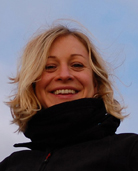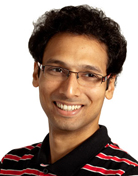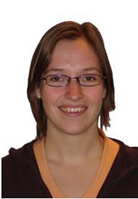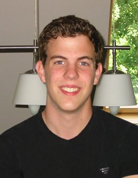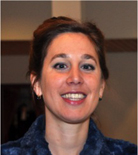ESHG Young Investigator Awards
The ESHG awards prizes of EUR 500.- for outstanding research by young scientists presented as a spoken contribution at the conference. All young scientists submitting spoken presentations were encouraged to apply. The nominee is the first author (i.e. presenting author) of the presented abstract, pre- or post-doctoral (not more than 4 years after PhD).
Awards are given in the following catergories:
- ESHG Young Investigator Awards for Outstanding Science
- Isabelle Oberlé Award for Research on Genetics of Mental Retardation
- Lodewijk Sandkuijl Award for the best talk in Statistical Genetics
- Vienna Medical Academy Award for the best talk in Translational Medicine
Candidates for Young Investigator Awards
Date and city of birth: 15th June 1988- Mangalore, India What is your current position? PhD student at the Centre for Medical Genetics at University of Antwerp. Why did you choose a career in genetics? I was interested, quite earlier on, in the field of genetics and this led me to pursuing both, my bachelors and masters degrees in the field of human genetics. My inquisitiveness and interest coupled with the dynamics and challenges of the constantly evolving field of genetics, along with impacting the knowledge of understanding disease mechanism and pathology, was the motivating factor to choose a career in research in this area. What is so interesting about the research you are presenting at ESHG 2013? This research, in particular, was extremely interesting because it's a story that starts from the clinic and goes through a circle ending back at the clinic. It allowed the integration of different fundamental and clinical research techniques, including computational tools which together, helped identify mutations in a novel gene( IBA57) and elucidate its role in severe myopathy and encephalopathy. Although challenging, it was wonderful to see how the results from each technique contributed to a little piece to the puzzle. This research impacted patient health providing them further insight into their disorder. There is much left to be understood and the results have opened new doors to more questions that need to be answered, but this is exactly what makes research interesting. It's not very often that you can see how your research impacts patient health positively and I am quite grateful for the opportunity to be a part of such exciting research. | Veronique Belzil Jacksonville, United States Talk: C20.1 RNA foci in C9FTD/ALS patients sequester RNA binding proteins and subsequently alter downstream splicing and expression of their RNA targets. Session: C20 Neurodevelopmental and neuropsychiatric disorders Date: Tuesday, June 11, 2013, 11:00 hrs | |
Date and city of birth: 11 May 1984(Grenoble, France) What is your current position? I am currently a postdoctoral fellow in the CNRS unit #8199 (Lille, France) headed by Prof Philippe Froguel. I am head of the next-generation sequencing group. My own research is focused on the contribution of rare genetic events to the risk of type 2 diabetes and obesity. Why did you choose a career in genetics? It is so fascinating and motivating to try to identify the cause of a genetic disease! Furthermore, our discoveries can radically change life of the mutated patients with more appropriate treatment and therapies. What is so interesting about the research you are presenting at ESHG 2013? Large clonal mosaic events (CME) were shown to be associated with age and cancer risk. We have shown a strong effect of type 2 diabetes (T2D) and its complications on CME development. Given the increased risk of cancer in CME carriers, our results may have profound clinical implications for the management of patients with severe T2D. |
Date and city of birth: 29-10-1982 Lisbon What is your current position? I am currently applying for post-doctoral fellowships through CEDOC - Chronic Diseases Research Centre from FCM Nova, Lisbon. Why did you choose a career in genetics? Many diseases, including cancer, are related with genetic alterations. Genetics is the basis of biological systems. By understanding the genetic basis of each disease, we can develop tools more specific, effective and appropriate for each patient. I believe the future of medicine will be intrinsically related with the molecular profile of patients and diseases, as we are evolving towards more personalized treatments. What is so interesting about the research you are presenting at ESHG 2013? This work, developed during my PhD at IPATIMUP, is based on manipulation of suppressor-tRNAs to recognize premature stop codons and restore protein expression. We demonstrate, for the first time, efficient recovery of a functional full-length protein, from a nonsense-mutated allele, using a suppressor-tRNA in gastric cancer cells. Importantly, this new strategy may be applied to other genetic diseases, being especially significant for inherited cancer syndromes. | |
Date and city of birth: 15.02.1984 Leipzig, Germany What is your current position? post-Doc, Institut für HumangenetiK Lübeck (Germany) Why did you choose a career in genetics? Especially in the field of human genetics I think to have the best possibilities to combine my interests in molecular mechanisms with clinical aspects. My main interest here is to understand the phenotypical consequences of specific mutations on physiological level. The field of human genetics is strongly and fast evolving, which contributes to help people and I really like being part of this progress. What is so interesting about the research you are presenting at ESHG 2013? Within the last month of my PhD time, which I successfully finished very recently, it started to expand my field of interest. The genetics of spinocerebellar ataxia (SCA), in particular SCA type 4, has a longstanding history in the department of Human Genetics in Lübeck. Using genome sequencing analysis and first functional follow-up experiments we could identify a mutation in a hitherto unknown protein-coding gene. Furthermore we could detect this mutation in a couple of patients and even two large families with SCA4 while this mutation is unknown in all databases available and could be excluded in a very large control cohort. The functional characterization of this new protein as well as experimental investigations delineating the physiological effects of the identified mutation draws my special interest. |
Date and city of birth: 13th February 1985, Norwich, UK What is your current position? PhD student (3rd year) at the Wellcome Trust Sanger Institute, Cambridge, UK. Why did you choose a career in genetics? The genetic causes of many rare, monogenic diseases remain unknown. Patients are often desperate to know the cause of these conditions, even though there is usually no treatment. I aim to identify genetic variants that cause these diseases, and therefore improve diagnostic rates for patients. What is so interesting about the research you are presenting at ESHG 2013? Exome sequencing is an effective tool for identifying genetic causes of abnormal fetal development. This is really exciting because it will empower affected families to make more informed reproductive decisions, and it may pave the way for exome sequencing to be introduced into prenatal diagnostic labs on a wider scale. | |
Date and city of birth: 14.06.1970; Bayburt/Turkey What is your current position? Research Associate, MD Why did you choose a career in genetics? I am a paediatrician and during my clinical practice I was confronted with many kids who suffered of rare inherited diseases. But only a few had a molecular genetic diagnosis, leading to frustration and also inability of future family planning. Therefore I decided to investigate the genetic basis of inherited diseases with focus on neurogenetics disorders. Accurate molecular genetic diagnosis is obligatory today as targeted pesonalized molecular therapies are entering clinical practice (Exon skipping therapies for Duchenne Muscular Dystrophy). What is so interesting about the research you are presenting at ESHG 2013? We found a novel gene for microcephaly which seems to be located in the nucleus, which may indicate a novel mechanism of disease. We also observed remarkable clinical variability. The gene discovery made pre-natal testing possible and one family has now a healthy child. |
Date and city of birth: 20-Sep-1986 Boskoop What is your current position? PhD student Why did you choose a career in genetics? The recent advances in sequencing technologies enabled researchers to start using Genomewide techniques in patients. This was a drive for me to go into genetics as this provided me an opportunity to do research which could improve diagnostic procedures. What is so interesting about the research you are presenting at ESHG 2013? We show that copy number variation (CNV) detection from whole exome sequencing data identifies most rare clinically relevant CNVs. And can be an improvement over low resolution microarrays used in routine diagnostics. | |
Date and city of birth: 18-12-1982 Vlissingen, The Netherlands What is your current position? PhD student Why did you choose a career in genetics? DNA has fascinated me since I had my first lesson on the subject in school. What is so interesting about the research you are presenting at ESHG 2013? We have performed extensive multi-level profiling of treatment-naïve material obtained from multiple primary and metastatic sites of three ovarian cancer patients. Our data highlights extreme intra-tumor heterogeneity, and demonstrate the substantial diversity of the evolutionary patterns of epithelial ovarian cancer. |
Date and city of birth: 19/03/1984, Breda, The Netherlands What is your current position? I am currently a postdoc in the Cancer Genomics Group at the Department of Human Genetics of the Radboud University Medical Centre, Nijmegen, The Netherlands. Why did you choose a career in genetics? I have always been intrigued by the fact that single genetic defects can predispose individuals to develop cancer. As the field of genetics is continuously evolving with innovative technologies, it is an extremely challenging work environment where I have found the perfect mix between fundamental and translational science. What is so interesting about the research you are presenting at ESHG 2013? Constitutional 3'end deletions of EPCAM cause epigenetic silencing of the downstream MSH2 gene in EPCAM-expressing tissues, leading to Lynch syndrome. As we learn more about these 3' end deletions, we see that the length of these deletions may have clinical implications for their carriers with respect to the type of tumors they may develop. It is an example of tissue specific cancer risk by the loss of a potential enhancer element which adds to our understanding of cancer predisposition. | |
Date and city of birth: 1986-05-30, Rotterdam, The Netherlands What is your current position? I'm a bioinformatics PhD student at the Genomics Coordination Center of the Genetics Department at the University Medical Center Groningen Why did you choose a career in genetics? The field of genetics allows me to put my computer knowledge and creativity to good use when studying interesting and challenging biological research questions. I aim to contribute to the knowledge about genetics during my PhD and hopefully many years beyond. What is so interesting about the research you are presenting at ESHG 2013? We show that the Genome of The Netherlands (GoNL), a population based sequencing effort of 769 individuals, can also be used to enhance non-Dutch GWAS's. The genotype imputation quality, when comparing to 1000G imputation, is not only enhanced in Dutch samples but also in British and Italian samples. |
Date and city of birth: Febrary 2 1978, Berlin, Germany What is your current position? Assistant professor and clinical geneticist at the University Hospital of Grenoble/ France and doctoral fellow in cell biology at the Grenoble Institut of Neurosciences (Inserm U836). Why did you choose a career in genetics? Better understand the relationship between tiny abberations taking place at the molecular level and their sometimes dramatic macroscopic consequences during the embryonic and foetal development was certainly one of the main triggers for me to choose genetics. The challenge to recognize specific phenotypes and predict their molecular bases was hence another reason. What is so interesting about the research you are presenting at ESHG 2013? Distal arthrogryposis (DA) is one of the most frequent clinical presentations of Arthrogryposis multiplex congenita. Yet until now molecular analyses failed to show mutations in known genes in approximately 60-70% of all cases. Our results show that ECEL1 is a frequent cause of DA and implies a new physiopathological mecanism. | |
Date and city of birth: 27/02/1980 Utrecht, the Netherlands What is your current position? Postdoc Why did you choose a career in genetics? I've always been interested in the heritability of traits. What is so interesting about the research you are presenting at ESHG 2013? The genome of the Dutch population reflects the history of the Netherlands at a molecular level. |
Date and city of birth: June 23, 1987 - Beirut, Lebanon What is your current position? I am a PhD student at the INSERM's Saint-Antoine Research Center, affiliated to the Pierre-and-Marie-Curie University in Paris. Why did you choose a career in genetics? My admiration for genetics started very early, even before entering college. As a young boy, I was fascinated by its logic, as a PhD student I am thrilled by its complexity. The technology, the prospect of a better understanding of human disease and the ever evolving challenges we face keep me motivated. What is so interesting about the research you are presenting at ESHG 2013? My work focuses on the interrelationship between genetics and epigenetics in microsatellite unstable colorectal cancers. For the first time, we propose a model where microRNA deregulation in tumour microenvironments and microRNA sequence alterations in tumour cells might constitute early and late events in the development of colorectal neoplasms, respectively. | |
| Lucas Fares Taie Paris, France Talk: C14.1 ALDH1A3 mutations cause recessive anophthalmia and microphthalmia Session: C14 Sensory disorders and Immunological disorders Date: Monday, June 10, 2013, 13:15 hrs |
Date and city of birth: 23.03.1983, Lausanne, Switzerland What is your current position? I am a 3rd year PhD student in Paul de Bakker's lab at the UMC Utrecht in the Netherlands. Why did you choose a career in genetics? I find it fascinating that all life's information is coded in DNA and am thrilled to work on understanding it. What is so interesting about the research you are presenting at ESHG 2013? We present here the largest set of directly observed de novo mutations to date and unveil some of their key properties contributing to genomic evolution. Moreover, computing mutation rates along the genome help establish a baseline for de novo mutation burden in healthy individuals. | |
Date and city of birth: 29/05/1984, Savona, Italy What is your current position? PhD Student in Human Genetics Why did you choose a career in genetics? I love solving puzzles, and human genetics provides the most interesting and charming. What is so interesting about the research you are presenting at ESHG 2013? I will describe a position effect mutation causing overexpression of LMNB1 gene and mimicking LMNB1 duplication as cause of Autosomal Dominant Leukodystrophy. This work further emphasize that genomic alterations that change the regulatory landscapes are important determinants of Mendelian phenotypes and are probably an underestimated entity. |
Date and city of birth: 02/24/1984, Traverse City, Michigan, USA What is your current position? I am pursuing a combined doctorate in veterinary medicine and genetics at the University of Pennsylvania, USA. Why did you choose a career in genetics? I became interested in genetics while working with animal models of human disease. I learned that while there are many biological similarities across species, it is equally important to understand the biological differences. This can also be said for differences among individuals within a species. Genetics interests me because it asks how DNA sequences influence biological differences among individuals, such as differences in disease susceptibility. What is so interesting about the research you are presenting at ESHG 2013? The research that I am presenting highlights how individual variation can be used to learn about biological function. We used natural variation in a histone demethylase gene, KDM4C, in order to learn how KDM4C is regulated, how KDM4C regulates the expression of other genes, and how KDM4C has a role in cell proliferation. This work also shows how targeting KDM4C could benefit cancer treatment. | |
Date and city of birth: 18.03.1983 Radolfzell am Bodensee, Germany What is your current position? Scientist Diagnostics & Research at LifeCodexx AG, Konstanz, Germany. Why did you choose a career in genetics? From my point of view genetics has the greatest potential to uncover the biology of human beeings What is so interesting about the research you are presenting at ESHG 2013? The use of next generation sequencing technology to provide non-invasive genetic testing provides early access to a broad spectrum of genetic information. Using this techniqe for prenatal testing is just the starting point of an evolving field of genetic testing that may cover a variety of genetically based clinical pictures |
Date and city of birth: 09.01.1985, Bern What is your current position? PhD student in bioinformatics and computational biology at the university of Lausanne Why did you choose a career in genetics? The genetic information in the DNA holds the blueprint for the biological system and is key to its regulation and functioning. Furthermore genetics defines variation, a crucial element of life. What is so interesting about the research you are presenting at ESHG 2013? We investigate how genetic information regulates cellular processes and how these are affected by genetic variation. By looking at these processes in a genomics / system biology approach, we discover general concepts crucial for the functioning of cells and organisms. | |
Hong Kong, Hong Kong Talk: C16.1 Patterns and Rates of Exonic de novo Mutations in Sporadic Hirschsprung Disease Patients Session: C16 Developmental syndromes Date: Tuesday, June 11, 2013, 11:00 hrs Date and city of birth: March 09, Jiujiang What is your current position?PhD student Why did you choose a career in genetics? I found genetics the most interesting to me when studied biology in undergraduate time. I enjoy the later research life for forensic genetics and statistical genetics. What is so interesting about the research you are presenting at ESHG 2013?The disease I am working on can be serve as a model for genetic study on complex diseases. |
Munich, Germany Talk: C13.2 WDR45 de novo mutations cause of a clinically distinct, X-linked subtype of NBIA Session: C13 Neurodegenerative disorders: From gene discovery to therapy Date: Monday, June 10, 2013, 13:15 hrs Date and city of birth: 05.03.1982 Überlingen What is your current position? PostDoc / MD Why did you choose a career in genetics? A career in genetics allows me to think about questions I am interested in a stimulating setting = fun. What is so interesting about the researchyou are presenting at ESHG 2013? The major forms of NBIA (neurodegeneration with brain iron accumulation)are autosomal recessive inherited. X-chromosomal WDR45 mutations occur de novo and together with a role of the beta-propeller family protein in autophagy it suggests both, a new pathomechanism and a new pathway in the pathogenesis of disorders characterized by extensive iron accumulation in the basal ganglia. | |
Utrecht, Netherlands Talk: C16.2 A novel chromosomal breakage syndrome caused by a missense mutation in a gene from the SMC5/6 complex Session: C16 Developmental syndromes Date: Tuesday, June 11, 2013, 11:00 hrs Date and city of birth: 24-01-1984, Humenne, Slovakia What is your current position? I am currently finishing my PhD training at the Department of Medical Genetics, University Medical Center Utrecht, The Netherlands. The titel of my thesis is: 'The next-generation of disease gene discovery'. Why did you choose a career in genetics? During my medical studies I realized that many diseases just happen without our contribution - we have it in our genes. I find it extremely fascinating to find out where exactly, what is the functional consequence and the continuously increasing impact on patient's care and treatment. What is so interesting about the researchyou are presenting at ESHG 2013? We characterized a novel chromosomal breakage syndrome with fatal pulmonary failure in a Dutch family that was negative for all known genes. Thanks to next-generation sequencing we were able detect the responsible gene. This gene is for the first time linked to a human disease and we are currently working on further functional characterization. |
Maastricht, Netherlands Talk: C03.4 Comprehensive Chromosome Screening in PGD and PGS - Ethical Challenges Session: C03 Prenatal diagnosis Date: Sunday, June 9, 2013, 13:15 hrs Date and city of birth: 11/09/1975, Gent (Belgium) What is your current position? I am currently working as a postdoctoral researcher at the Maastricht University. Why did you choose a career in genetics? My field of research is bioethics, especially ethical questions surrounding genetics and reproductive technologies. I chose these specific fields because they allow me to both study exciting new technologies and reflect on their societal and ethical implications. What is so interesting about the research you are presenting at ESHG 2013? Discussions about genetic screening of embryos have often focussed on designer babies and selecting smart children. I have investigated how technologies that allow comprehensive screening of an embryo's chromosomes already raise difficult dilemmas and questions regarding the role of the professional in assisted reproduction and the extent of parental autonomy. These issues need further reflection as these technologies are being implemented today. | |
Date and city of birth: Dijon, France What is your current position? Postdoctoral researcher at the Stem Cell laboratory and the Department of Genetic Medicine and Development, Geneva University Why did you choose a career in genetics? Genetics have proven extremely informative for the study of many diseases investigated using induced pluripotent stem cells (iPSCs). Indeed, the combination of genetics and iPSCs is an exciting and fast moving area of current studies. I believe that these approaches will advance our understanding of human diseases by deciphering the mechanisms involved in the pathogenesis. What is so interesting about the research you are presenting at ESHG 2013? We report the generation and characterization of induced pluripotent stem cells (iPSCs) derived from monozygotic twins discordant for trisomy 21. Since the rest of the genome is identical between the two twins, this provides a unique model to study the effect of the supernumerary chromosome 21. This iPSC-based model is an innovative way to study Down syndrome (DS) neurodevelopment as it offers an unprecedented opportunity to study DS early embryonic development and enable the study of the detailed pathogenetic mechanisms by which the extra copy of chromosome 21 leads to DS phenotypes. We found in particular that neural cells derived from DS iPSCs recapitulate the neurodevelopmental features of DS as revealed through genetic and functional studies. Moreover, the finding that we can target pathogenetic pathways by both pharmacological and hairpin RNA silencing approaches allows a proof-of-principle for potential screening tests using iPSC technology. This should provide the basis for designing new therapeutic approaches for DS patients. |
Amsterdam, Netherlands Talk: C10.5 Effects of multifaceted oncogenetics training for general practitioners Session: C10 Genetic Counselling, Education and Public Services Date: Monday, June 10, 2013, 13:15 hrs Date and city of birth: 13-12-1973, Haarlem, The Netherlands What is your current position? General practitioner and PhD Candidate Why did you choose a career in genetics? I started my science work in genetics during my medical study rotation in Boston, USA with Prof Dr Carol Warner in 1998 where I worked on preimplantation embryo development and genetic influences. This is really where I started to find my passion in genetics and see how genotype malfunction can influence phenotype. Further on I worked on Rett syndrome with Dr Carolyn Schanen at UCLA, where we found out about DNAtranscription chaos through mutations in the methyl CpG binding 2 gene and helped parents when I was able to diagnose the genetic mutation responsible for their child's impairments. What is so interesting about the research you are presenting at ESHG 2013? Being able to translate genetics innovations and finally bring them to the clinic by educating physicians on genetics is very fulfilling. Finally it is possible to bring everything learnt in the laboratory effectively to the physician, patient and their family where it belongs. | |
Paris, France Talk: C04.4 Parkinson's disease and melanoma: a common genetic pathway linked to PARKIN inactivation Session: C04 Cancer predisposition Date: Sunday, June 9, 2013, 13:15 hrs Date and city of birth: 17/12/1983 Taipei Taiwan What is your current position? I'm a Taiwanese student in France. This is the last year of my PhD program. Why did you choose a career in genetics? For me genes are like ordering forms which save and transfer customers'(body's) needs to a factory for producing and assembling components (amino acids) in a functional furniture (proteins). They are the source of mistakes that cause a disease. Fixing the mistakes from the biginning may prevent the occurrence of the disease. What is so interesting about the research you are presenting at ESHG 2013?Melanoma and Parkinson's disease are both considered as multifactorial diseases. Identification of genetic risk factors for both diseases and high incidence of co-occurrence of both diseases in an individual have been carried out and mentioned for a long time. This noteworthy work identifies a common genetic pathway that may explain the epidemiological association between these two diseases. | Marjorie Hubeau Paris, France Talk: C14.6 Ion transporter deficiency predisposes to pyogenic bacterial infection by partial oxidative burst defect in granulocytes Session: C14 Sensory disorders and Immunological disorders Date: Monday, June 10, 2013, 13:15 hrs | |
Date and city of birth: 04/16/1987, Sarcelles (France) What is your current position? PhD student Why did you choose a career in genetics? Genetic diseases affect a large number of patients but little is known about the physiopathology of many of them. Until today, few therapies are available to treat them. Research in this field gives me the opportunity to find novel genes and to improve the understanding of the mechanisms involved in Nephrotic syndrome. My results will hopefully contribute to find new therapeutic targets in order to elaborate treatments. What is so interesting about the research you are presenting at ESHG 2013? My work underlines the critical function of IFT139 in both podocytes and tubular epithelial cells, via ciliary transport but also microtubule network necessary for cell differenciation, migration and proper organization/maintenance of intercellular junction. Indeed, it shows for the first time that a ciliary protein, previously found in isolated Nephronophtisis, could also be implicated in Nephrotic syndrome. |
Date and city of birth: 23/12/1980 Cosenza, Italy What is your current position? PostDoc Why did you choose a career in genetics? Since I was a child, my dream was to become a good scientist. I enthusiastically witnessed the possibility to investigate our genetic determinant to better understand how our body works. What is so interesting about the research you are presenting at ESHG 2013? Studing a rare genetic disease we uncovered the existence of a new group of mitochondrial diseases in which impairment of the last segment of the mitochondrial respiratory chain results in developmental tissue-specific defects. Our results indicate an essential role of the mitochondrial respiratory chain in eye and brain development. | |
| Leigh Jackson Plymouth, United Kingdom Talk: C10.3 Incidental findings in research: National Health Service Research Ethics Committee member perspectives. Session: C10 Genetic Counselling, Education and Public Services Date: Monday, June 10, 2013, 13:15 hrs |
Date and city of birth: 30-07-1985Nijmegen What is your current position? I am currently a PhD student working at the departments of Child Neurology and Medical Genome Analysis. Why did you choose a career in genetics? With the new genetic techniques we can solve the genetics of rare diseases. It is fantastic to be able to give patients and families answers and help them cope with their diseases. It is also fantastic to achieve better understanding of human physiology through determining the cause of diseases. What is so interesting about the research you are presenting at ESHG 2013? My focus is on exceedingly rare inherited encephalopathies. Finding the causal gene with exome sequencing for one patient remains challenging. We show that specific abnormalities on brain MRI can help tremendously in defining homogenous patient groups, for which finding the common mutated gene by exome sequencing has a better chance. | |
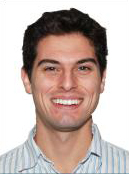 Daniel King Daniel KingHinxton, United Kingdom Talk: C17.2 Enrichment of uniparental disomy events detected in the Deciphering Developmental Disorders rare disease study Session: C17 Basic mechanisms in cytogenetics and molecular genetics Date: Tuesday, June 11, 2013, 11:00 hrs Date and city of birth:March 24th, 1983. New York, USA What is your current position? PhD Student Why did you choose a career in genetics? In my early clinical training, I developed an enthusiastic hope that the availability and interpretation of DNA sequencing data would improve diagnostic accuracy in our patients with rare, often cryptic diseases. I decided I needed to improve my computational skills to take a leadership role in bioinformatics software development. This PhD studentship has been a fantastic opportunity to work with scientists and physician scientists in developing new software tools that assist the diagnostic process in our rare disease study. What is so interesting about the research you are presenting at ESHG 2013? Our novel computational method detects an important inheritance aberration called Uniparental Disomy in family trios with high accuracy, and the first method capable of exome-based detection. We describe some of the UPD events we found in our patients, and show how UPD detection has helped bring diagnoses to these children. | Peter Krawitz Berlin, Germany Talk: C15.3 Targeted sequencing of GPI anchor synthesis pathway genes identifies mutations in PGAP2 as a new cause of hyperphosphatasia with mental retardation Session: C15 NGS-based diagnostics Date: Tuesday, June 11, 2013, 11:00 hrs | |
Date and city of birth: 05.09.1986, Rodalben, Germany What is your current position? PhD student Why did you choose a career in genetics? Identifying the mutation underlying a particular disease is essential for the understanding of the corresponding mechanistic pathway as well as the development of therapeutic options What is so interesting about the research you are presenting at ESHG 2013? Mitochondrial disorders are genetically and clinically extremely heterogeneous making proper diagnosis very challenging. Exome sequencing has now revolutionized the field and proven as a powerful and reliable tool to identify disease causing mutations and helping to understand mitochondrial physiology. This hopefully paves the way for new treatement options | Maéva Langouët Date and city of birth: 4 June 1988 What is your current position? I am a second year PhD student. Why did you choose a career in genetics? When I was in first year of university I chose to continue in the genetic field because it was the one I was the most interested in. Then I developed a high interest in hospital-related work, in collaboration with clinicians, investigating genetic causes of human conditions. What is so interesting about the research you are presenting at ESHG 2013? In addition to explaining the affected patient's phenotype, the mutations identified in the TTI2 gene offer new clues about the molecular networks that may be disrupted in ID patients. These mutations also provide new insights on those networks that are involved in brain development and the establishment of cognitive functions. | |
Date and city of birth: 05.06.1981, Zagreb, Croatia What is your current position? Resident, training in medical genetics Why did you choose a career in genetics? As a medical doctor I have chosen to pursue a career in medical genetics as I found it to be the most exciting and emerging area in medicine, which additionally offers me a unique opportunity to combine scientific research of studying the human nature with clinical practice in various fields of medicine. What is so interesting about the research you are presenting at ESHG 2013? Driven by sustained increase in lifespan, age-related diseases represent a major challenge for health care systems. Studies of rare, monogenic syndromes with signs of premature aging offer a unique opportunity to better understand the “physiological” aging.I will be presenting identification of the genetic cause of a novel progeroid syndrome in just a single patient, supported by extensive in-vitro and in-vivo analyses and providing functional links to known progeroid syndromes. |
Date and city of birth: 06.04.1985, Le Mans, France What is your current position? PhD student at the University of Geneva Medical School, Switzerland Why did you choose a career in genetics? I've always been intrigued by the complexity of our genome and I think it is fascinating to explore the mechanisms involved in the genotype/phenotype relationships. I believe that, in the near future, genetics will play a key role in medicine. What is so interesting about the research you are presenting at ESHG 2013? In this study, we show that the functional characterization of human chromosome 21 genes is essential to improve the understanding of the molecular bases of Down syndrome. | |
Date and city of birth: 24/10/1974Haifa, Israel What is your current position? Genetic counselor, PhD student Why did you choose a career in genetics? I chose to pursue a career in genetics since I believe that today genetics is impacting all fields of health and science. And has enormous influence on diseases and variance. As a genetic counselor I have the opportunity create the interface between science and people, to help improve their knowledge and decision making. What is so interesting about the research you are presenting at ESHG 2013? Our research is intended to examine the ability to switch the use of BRCA testing as a tool for individuals at risk to the population level. The study aims to increase prevention, therefor reducing morbidity of breast and ovarian cancer. We study the feasibility and costs of this intervention. |
Date and city of birth: 30/06/1987, Longjumeau (France) What is your current position? PhD student, 3rd year Why did you choose a career in genetics? I choose a career in both genetics and cancer, and I think they are closely related. I'm convicted that genetics are roots of everything and especially in genetically determined cancers. I believe that personalized medicine is future and to do that we absolutely need genetics. What is so interesting about the research you are presenting at ESHG 2013? The most interesting point of my research is that in the first developed cellular model of Sdhb deficient cells, we found the same activated pathway that in human tumors. It is a crucial point because this molecular pathway allows to explain invasive capacities of these cells, and thus the aggressiveness of tumors, which at the moment remains misunderstood | |
Date and city of birth: 22-03-1978, Athens What is your current position? Post-doc at Stylianos Antonarakis' laboratory in the Department of Genetic Medicine and Development, University of Geneva, Switzerland Why did you choose a career in genetics? Because genetics is life's cornerstone What is so interesting about the research you are presenting at ESHG 2013? The power of modern genetics to diagnose previously undiagnosed patients and the inversion of our way to approach and learn the genes' function, starting from the gene and ending up to the phenotype. |
Date and city of birth: 05/10/1978, Chambray-lès-Tours (France) What is your current position? MD-PhD in clinical genetics in the Medical Genetics Department, University Hospital, Nantes (France) . I have also joined the UMR1089 research team, INSERM, Atlantic Gene Therapy Institute (AGTI), that works on gene and cell therapies in neuromuscular disorders. Why did you choose a career in genetics? Genetics provides great opportunities for gene identification as we can see with the NGS revolution and for the understanding of pathological mechanisms. By a better knowledge of the pathology underlying disorders, I hope we will be able to cure more and more genetic diseases in the years to come. What is so interesting about the research you are presenting at ESHG 2013? It all began from a sporadic case of a boy with congenital poikiloderma and muscle weakness. We identified a new gene in this new syndrome that was a major step for the patients. It is my hope that all our efforts to understand the disease will lead to a treatment as soon as possible. | |
Date and city of birth: 23.12.1980 What is your current position? PhD-student Why did you choose a career in genetics? The interest towards genetics has began since high school, from Mendelian inheritance and more complex gene interactions. Subsequently, the interest had been growing along with my deeper studies at the University (2000-2003), when Human Genome project has been just finished. With great amazement I discovered a new huge "universe" full of mysteries, which inspired me a lot to be involved in the studies of Human Genetics. What is so interesting about the research you are presenting at ESHG 2013? Chromothripsis is a very interesting phenomenon discovered quit recently (2011)and there are many open questions regarding the possible mechanisms leading to these catastrophic localized rearrangements in cancer and germline. By reviewing all reported germline cases we define and classify chromothripsis, as well as propose a possible mechanism for the initiation of chromosome shattering. |
Date and city of birth: 26-04-1981, Zaanstad What is your current position? CLinical geneticist in training at the dept. of Clinical Genetics, Erasmus MC, Rotterdam, the Netherlands. Why did you choose a career in genetics? As a clincian, I want to understand the disease mechanism in my patients, from genotype to phenotype. Rapidly evolving new technologies enable us to make new discoveries and change the field of medicine. What is so interesting about the research you are presenting at ESHG 2013? For the fist time we show that defects of the Integrator Complex, involved in processing of the major spliceosome snRNAs, can lead to human disease. | |
Date and city of birth: June 1982 in Rome, Italy What is your current position? PhD candidate at Columbia University, USA. Why did you choose a career in genetics? During my studies of artificial intelligence and cognitive robotics I became fascinated by the process of automatic learning from data, and focused my studies on machine learning. I then had a chance to work on large genetic datasets, and decided to continue my research in the field of statistical genetics. What is so interesting about the research you are presenting at ESHG 2013? We show that the length and frequency of identical-by-descent haplotypes in large datasets of purportedly unrelated individuals can be used to reconstruct demographic events that occurred in the past tens to few hundreds of generations, where other methods are underpowered. Our research provides a new tool for DNA-based investigation of recent historical events and can be used to support studies of evolutionary and medical genetics. |
Date and city of birth: 30.08.1980 Oulu What is your current position? PhD student Why did you choose a career in genetics? I am fascinated by the tremendous wisdom and diversity hidden in the simple chemical structure of DNA What is so interesting about the research you are presenting at ESHG 2013? Our research highlights the interplay between genome, epigenome, and environment in colon tumorigenesis and provides new insight of respective genes and alterations as biomarkers for diagnostic, prognostic and therapeutic applications in humans. | |
Date and city of birth: 23/11/85 Swansea What is your current position? PhD student at the MRC Centre for Neuropsychiatric Genetics and Genomics, Institute of Psychological Medicine and Clinical Neurosciences, Cardiff University Why did you choose a career in genetics? With the recent technological advances in genetics, I was excited by the opportunity of applying my training in bioinformatics to real data in order to gain a greater understanding of the biology underlying human disease. What is so interesting about the research you are presenting at ESHG 2013? Several copy number variants (CNVs) have been implicated in the aetiology of schizophrenia. However, due to their rarity, it is not yet clear whether they are all true risk factors for the disorder. In the largest independent schizophrenia sample to date, we provide the most accurate estimates of risk from individual CNVs and also estimate the total burden of susceptibility conferred by all CNVs. |
Date and city of birth: October 6, 1985 in Managua, Nicaragua. What is your current position? PhD Student. Why did you choose a career in genetics? I was always interested in mathematics and found that genetics was a field where mathematics can have a very strong impact on how we think about health, medicine, and disease. I am intrigued by the possibilities of what we can learn from genetic discoveries related to disease: 1) understanding the genetic architecture of disease, 2) pinpointing genes and functional pathways that play a role in disease risk, and 3) defining novel therapeutic hypotheses with the goal of translating genetics to therapies. What is so interesting about the research you are presenting at ESHG 2013? The research I am presenting at ESHG 2013 is one of the first studies to zoom in on rare variants and the role they play in common diseases. It is a major undertaking where we have made progress in our ability to: 1) process and analyze raw sequencing data, 2) characterize the landscape of genetic variation in multiple ethnicities, 3) predict the impact of genetic variants on gene function, and 4) assess association of rare variants to phenotype. | |
Date and city of birth: Oct 22, 1983, Bordeaux, France What is your current position? I am a molecular geneticist at Dijon University Hospital Why did you choose a career in genetics? I started working in human genetics at 17 years old as a summer student in Guy Rouleau's lab. Since then, I could not imagine another career choice. Genetics offers the opportunity to advance our understanding of the human genome and to make a difference in the life of people. What is so interesting about the research you are presenting at ESHG 2013? We identified the genetic cause of a rare syndromic form of insulin resistance and lipoatrophy. These findings may help deciphering the molecular mechanisms underlying more prevalent forms of insulin resistance and may have direct implications for the clinical management of affected individuals. |
Miriam Schmidts Date and city of birth: 21/07/1978 in Loerrach, Germany What is your current position? Clinical Research Fellow and PhD student Why did you choose a career in genetics? I am fascinated by the way genetic information determines such complex processes as building entire organisms. From a medical point of view, I think we can learn a lot about disease pathomechanisms from genetics (not only regarding genetic diseases). And I very much enjoy the way research and clinical care is linked in genetics! What is so interesting about the research you are presenting at ESHG 2013? I work on the molecular basis of ciliary diseases, mainly a rare skeletal disorder called Jeune Syndrome which often leads to death. Although cilia, representing hair like cellular extensions, have been known to exist on nearly every cell type for decades, they have long been neglected and have only been recently acknowledged to play crucial roles in development and health maintenance. Proteins encoded for by ciliary genes are quite abundantly expressed throughout the human organism, but mutations in those genes can cause quite different phenotypes from obesity, cystic kidneys, brain malformations, retinal degeneration to chondrodysplasias. Vice versa, the same disease can be caused by mutations in different genes implying more complex regulatory mechanisms. With the new sequencing techniques combined with functional follow-up, the ciliary field has made huge advances which have also massively increased the knowledge about ciliary diseases. So for me these are very exciting times! | |
| Janneke H. Schuurs-Hoeijmakers Nijmegen, The Netherlands Talk: C20.2 Rapid identification of autosomal recessive and X-chromosomal mutations in small sibling families Session: C20 Neurodevelopmental and neuropsychiatric disorders Date: Tuesday, June 11, 2013, 11:00 hrs |
Date and city of birth: 03/08/1981, Nagpur, India What is your current position? Clinical Research Fellow in Clinical Genetics/Craniofacial Surgery and 2nd year DPhil student, University of Oxford Why did you choose a career in genetics? Craniofacial malformation and its genetic basis has always fascinated me. As a surgeon working closely with geneticists, I have seen the positive impact a formal molecular genetic diagnosis can have on patient care. It improves the accuracy of genetic counselling and recurrence risk, guides post-operative management and provides a tangible ”˜label' for patients. What is so interesting about the researchyou are presenting at ESHG 2013? My research uniquely marries molecular genetics with surgery. It describes a fascinating story encompassing novel disease gene discovery by next-generation sequencing, identification of numerous further mutations and strong corroborating functional evidence. It has been translated into national testing strategies in the UK, thereby improving diagnostic outcomes for craniofacial patients. | |
Sutton, United Kingdom Talk: C04.2 Mosaic PPM1D mutations are associated with predisposition to breast and ovarian cancer Session: C04 Cancer predisposition Date: Sunday, June 9, 2013, 13:15 hrs Date and city of birth: 16/02/1979, Cambridge, England What is your current position? Clinical Research Fellow, Department of Genetics and Epidemiology,Institute of Cancer Research, London, UK Why did you choose a career in genetics? I have always been fascinated by the molecular aetiology of disease which gives insight into the biological pathways underlying pathological processes, and identifies new therapeutic approaches. I was particularly drawn to cancer genetics, since identifying individuals who are genetically predisposed to cancer development allows the implementation of personalised screening and management strategies to reduce mortality. What is so interesting about the researchyou are presenting at ESHG 2013? This research has identified a new class of genetic defect associated with cancer predisposition; a mosaic cancer predisposition marker that is genetic, but not hereditary, and is detectable in blood but not the tumours it is associated with. This opens the possibility of exciting new mechanisms of cancer development and the potential for novel biomarkers for disease. | Thomas Sparso Copenhagen, Denmark Talk: C09.1 Exome sequencing of 2,000 Danish individuals and the role of rare coding variants in type 2 diabetes Session: C09 Population-based sequencing Date: Monday, June 10, 2013, 13:15 hrs | |
London, United Kingdom Talk: C18.2 A causal association between vitamin D status and blood pressure: a Mendelian Randomization study in up to 150,846 individuals Session: C18 Big GWAS Date: Tuesday, June 11, 2013, 11:00 hrs Date and city of birth: 06/05/1977, Chennai, India What is your current position? Research Associate, Institute of Child Health, University College London, London, United Kingdom Why did you choose a career in genetics? Since I was in high school, I loved genetics. Of all the biological and medical fields, Genetics is the one that attracted me the most because for me understanding the way in which genetic mutations/polymorphisms contribute to complex traits is really fascinating. I anticipated back then that Genetics was supposed to be the potential science of the future. So I chose this field and I contributed in projects which related to Genetic Epidemiology and Molecular Genetics. However, I found Genetic Epidemiology to be more interesting and hence, I will continue in this field with the aim of identifying novel genetic markers and pathways relating to complex traits using genetic epidemiological strategies. What is so interesting about the research you are presenting at ESHG 2013? Observational studies have shown inconsistent associations between low vitamin D status and hypertension. Also, randomised controlled trials of vitamin D supplementation in humans have produced inconsistent effects on cardiovascular outcomes. So, we have used genetic variants as proxy markers for life-long differences in vitamin D status to test for the causal association with hypertension. This approach, commonly entitled Mendelian Randomisation, exploits the concept that the individual genotypes are assigned randomly at meiosis, thereby remaining unaffected by underlying disease processes and meaning that genetic variants are largely independent of non-genetic confounding factors. Our study is interesting as it provides further support for important non-skeletal effects of vitamin D and also promoting vitamin D as a potentially interesting target for preventive interventions. |
|
Nijmegen, Netherlands Talk: C08.2 Mutations in DEAF1 cause intellectual disability with severe speech impairment Session: C08 Intellectual disability: Gene discovery and dysfunction Date: Monday, June 10, 2013, 13:15 hrs Date and city of birth: July 23rd 1985 in Eindhoven, the Netherlands What is your current position? I am a PhD student in clinical genetics at the department of Human Genetics of the Radboud University Medical Centre in Nijmegen, the Netherlands. The topic of my PhD is the identification of novel causes for intellectual disability. Why did you choose a career in genetics? During my medical studies I became interested in genetics, because I was intrigued by the diverse and complex problems of the patients and the possibilities genetics could offer to these patients and their families. I think it is very exciting to work in a field where clinic and research are working so closely together and that is so rapidly evolving. What is so interesting about the research you are presenting at ESHG 2013? We identified a novel gene in three patients with intellectual disability using next generation sequencing and investigated with different functional tests the role of this gene and the mutations in the intellectual disability of the patients. In this way we show that mutations in DEAF1 are a new cause for intellectual disability. |
München, Germany Talk: C19.3 Somatic mutations in ATP1A1 and ATP2B3 lead to aldosterone-producing adenomas and secondary hypertension Session: C19 Internal organs and endocrinology: Gene identification and function Date: Tuesday, June 11, 2013, 11:00 hrs Date and city of birth: June 12th 1986 in Scheibbs/Austria What is your current position? I am a third year PhD student in bionformatics at the Institute of Human Genetics at the Helmholtz Center Munich. Currently, I'm working mostly on the analysis of Next-Generation Sequencing experiments. Why did you choose a career in genetics? In my opinion the field of genetics and especially of Next-Generation Sequencing presented the most interesting and challenging opportunities for me as a bioinformatician. What is so interesting about the research you are presenting at ESHG 2013? Using exome sequencing, we identified dominant somatic alterations in two members of the ATPase gene family which are responsible for autonomous aldosterone secretion in roughly 7% of aldosterone-producing adenomas. This shows that exome sequencing is a promising tool to identify causal mutations in adenomas. |
Nijmegen, Netherlands Talk: C20.4 GATAD2B loss-of-function mutations cause a recognizable syndrome with intellectual disability and are associated with learning deficits and synaptic undergrowth in Drosophila Session: C20 Neurodevelopmental and neuropsychiatric disorders Date: Tuesday, June 11, 2013, 11:00 hrs Date and city of birth: February 28, 1981 What is your current position? I'm a clinical geneticist in training at the department of Human Genetics in Nijmegen, The Netherlands. Last year I defended my thesis entitled ”˜'Making Headway with the Molecular and Clinical Definition of Rare Genetic Disorders with Intellectual Disability'' Why did you choose a career in genetics? First of all, I like the opportunity to combine and link genetic research with the care for patients and their families. It is also a pleasure to collaborate with many different disciplines in the lab and in the clinics. Furthermore, it is great to be part of the fast moving and exciting field of genetics. What is so interesting about the research you are presenting at ESHG 2013? I will present four individuals representing a novel clinically recognizable intellectual disability syndrome. The first two individuals were identified by whole exome sequencing. Identification of two additional individuals with highly similar phenotypes and complementary functional studies in Drosophila ultimately further established this novel syndrome. This illustrates the importance of close collaboration between clinical and lab specialties, and the need for careful collection, storage and sharing of phenotype and genotype data. | |
| Daria Zhernakova Groningen, Netherlands Talk: C05.6 Novel genetic variants associated with alternative polyadenylation and expression of noncoding transcripts Session: C05 Functional Genomics Date: Sunday, June 9, 2013, 13:15 hrs | ||

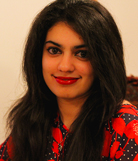 Nikhita Ajit Bolar
Nikhita Ajit Bolar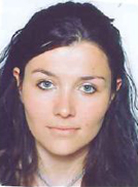 Amélie Bonnefond
Amélie Bonnefond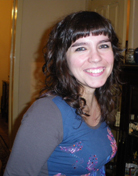 Renata Bordeira-Carriço
Renata Bordeira-Carriço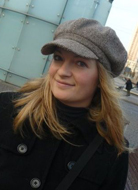 Diana Braunholz
Diana Braunholz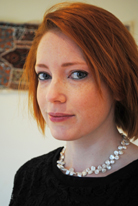 Keren Carss
Keren Carss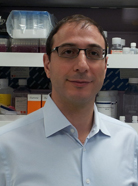 Sebahattin Cirak
Sebahattin Cirak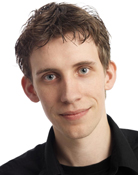 Joep de Ligt
Joep de Ligt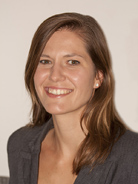 Mirjam de Pagter
Mirjam de Pagter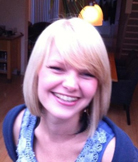 Richarda de Voer
Richarda de Voer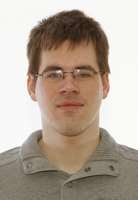 Patrick Deelen
Patrick Deelen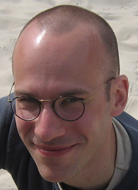 Klaus Dieterich
Klaus Dieterich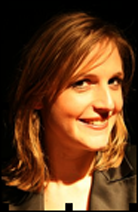 Clara Elbers
Clara Elbers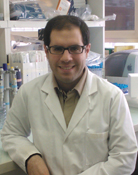 Nizar El-Murr
Nizar El-Murr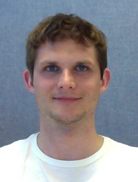 Laurent Francioli
Laurent Francioli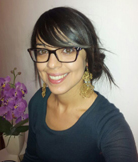 Elisa Giorgio
Elisa Giorgio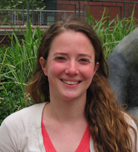 Brittany Gregory
Brittany Gregory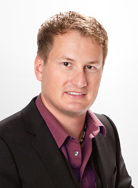 Sebastian Grömminger
Sebastian Grömminger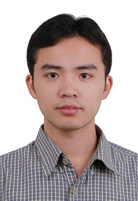
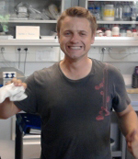
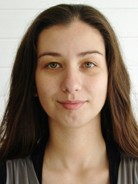
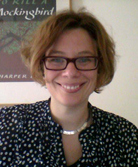
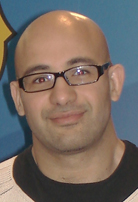 Youssef Hibaoui
Youssef Hibaoui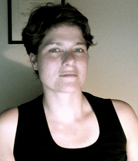
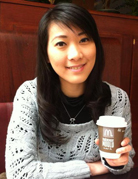
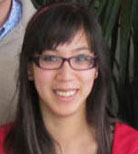 Evelyne Huynh Cong
Evelyne Huynh Cong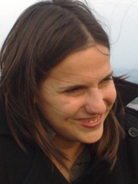 Alessia Indrieri
Alessia Indrieri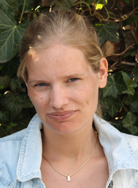 Sietske Kevelam
Sietske Kevelam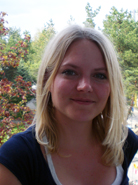 Laura Kremer
Laura Kremer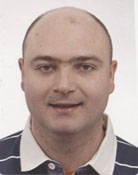 Davor Lessel
Davor Lessel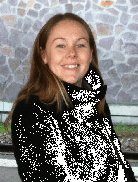 Audrey Letourneau
Audrey Letourneau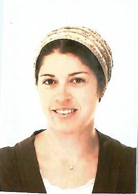 Sari Lieberman
Sari Lieberman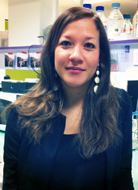 Céline Loriot
Céline Loriot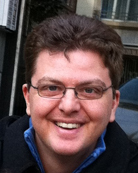 Periklis Makrythanasis
Periklis Makrythanasis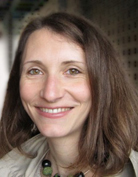 Sandra Mercier
Sandra Mercier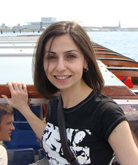 Lusine Nazaryan
Lusine Nazaryan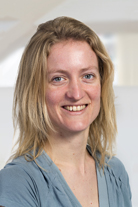 Renske Oegema
Renske Oegema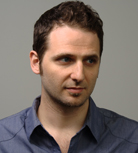 Pier Francesco Palamara
Pier Francesco Palamara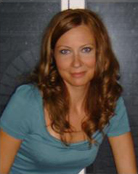 Marjaana Pussila
Marjaana Pussila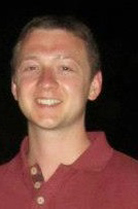 Elliott Rees
Elliott Rees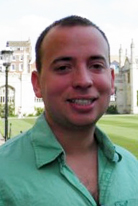 Manuel Rivas
Manuel Rivas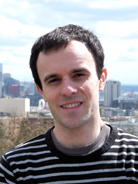 Jean-Baptiste Rivière
Jean-Baptiste Rivière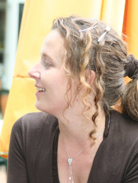
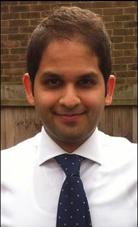 Vikram Sharma
Vikram Sharma